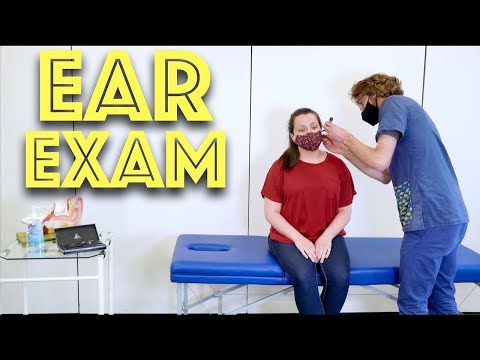Clinical Examination of Ear – Clinical Skills – Dr Gill
Ear examination is an essential part of clinical medicine, used to assess and diagnose a variety of auditory and vestibular disorders. Dr. Gill, an expert in otology, offers an insightful approach to mastering clinical skills needed for a thorough ear examination. This article provides a structured guide based on Dr. Gill’s methodology.
### Preparing for the Examination
Before beginning the ear examination, it is crucial to establish a comfortable environment for both the patient and the practitioner. Dr. Gill emphasizes the importance of explaining the procedure to the patient to ease any anxiety and obtain the patient’s cooperation throughout the examination process.
### Equipment Needed
The essential tools for an ear examination include:
– Otoscope: A key tool used to visualize the ear canal and tympanic membrane.
– Tuning Forks: Used for conducting hearing tests such as Rinne and Weber tests.
– Audiometer: Optional, for more detailed hearing assessment.
### External Examination
Dr. Gill begins with an inspection of the external ear, checking for any abnormalities like asymmetry, lesions, or signs of inflammation. Palpation helps assess any tenderness or swelling which could indicate infection or other pathology.
### Otoscopic Examination
Using an otoscope, Dr. Gill examines the external auditory canal (EAC) and tympanic membrane (TM). Key observations include:
– **Canal Condition**: Checking for obstructions such as wax blockages or foreign bodies.
– **Tympanic Membrane**: Observing its color (should normally be pearly gray), integrity (whether intact or perforated), position (retracted or bulging), and presence of any scars or infections.
### Hearing Tests
Audiometry is useful but in many clinical situations, quick bedside tests like Rinne and Weber can provide good insights into hearing levels:
– **Rinne Test**: Compares air conduction (AC) against bone conduction (BC). Normally AC > BC.
– **Weber Test**: A tuning fork is placed on top of the head to check if sound lateralizes to one ear which might suggest either sensorineural or conductive hearing loss depending on whether it goes toward or away from the affected side respectively.
### Special Tests
Additional assessments may include:
– **Eustachian Tube Function**: Perform maneuvers such as asking the patient to swallow while watching TM movement through otoscopy.
– **Vestibular Function Tests**: If dizziness is a complaint simple bedside tests like Dix-Hallpike maneuver can be performed.
### Documenting Findings
Dr. Gill stresses careful documentation of all findings during clinical examinations which should include details on visual inspections audiometric results and responses from various special tests conducted during the exam session This documentation assists in accurate diagnosis but also ensures continuity in care when consulting with specialists or during follow-up visits.
### Conclusion
Conducting a methodical ear examination requires patience keen observation skills and knowledge of anatomical structures and potential pathologies as illustrated by Dr Gill By using a systematic approach combined with effective communication healthcare professionals can greatly enhance their ability to diagnose and treat conditions affecting ears effectively thereby improving outcomes for their patients As technology advances so too do techniques in assessing auditory health thus constant updating of skills including regular practice under guidance such as that offered by experts like Dr Gill remains crucial
